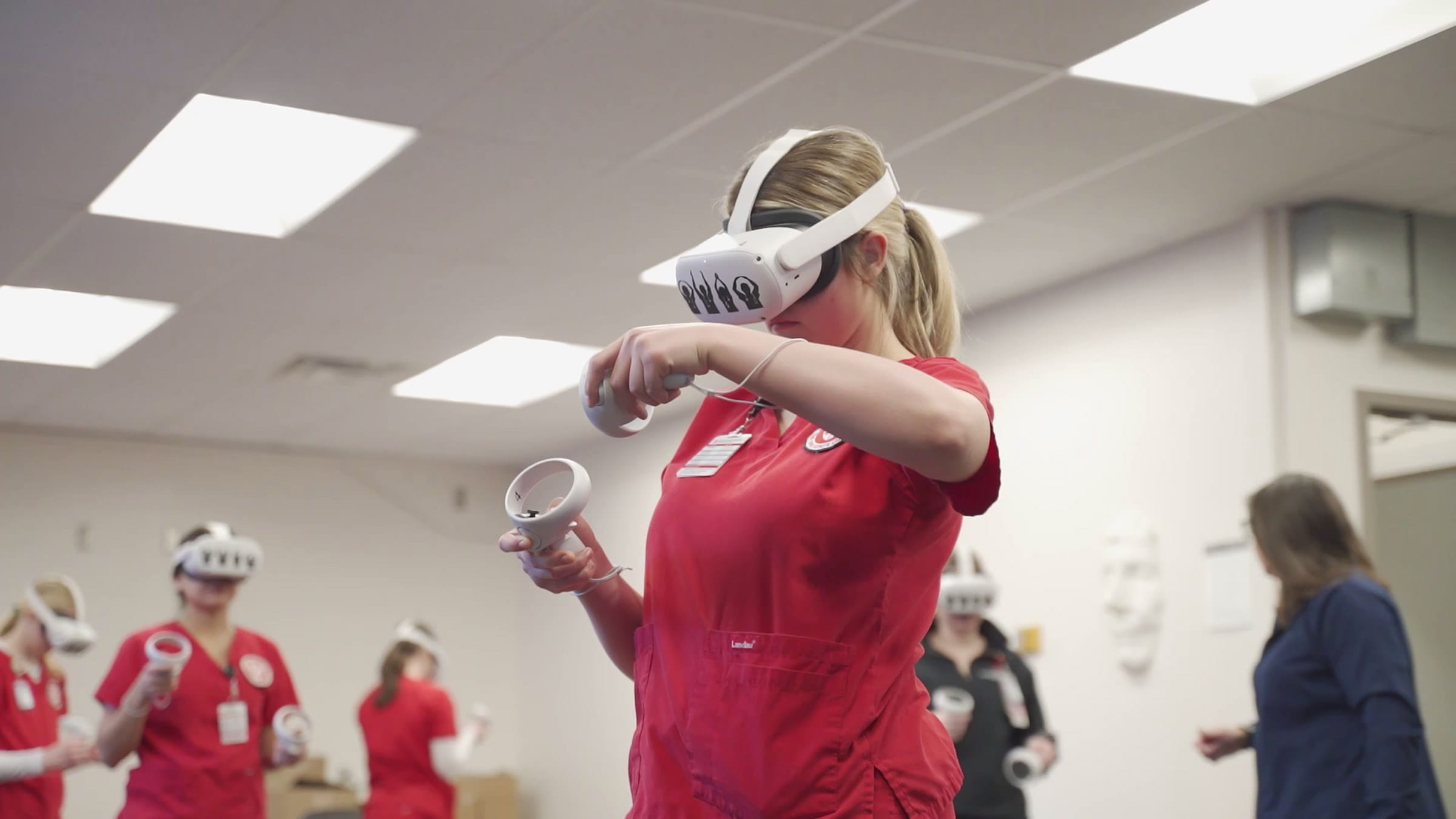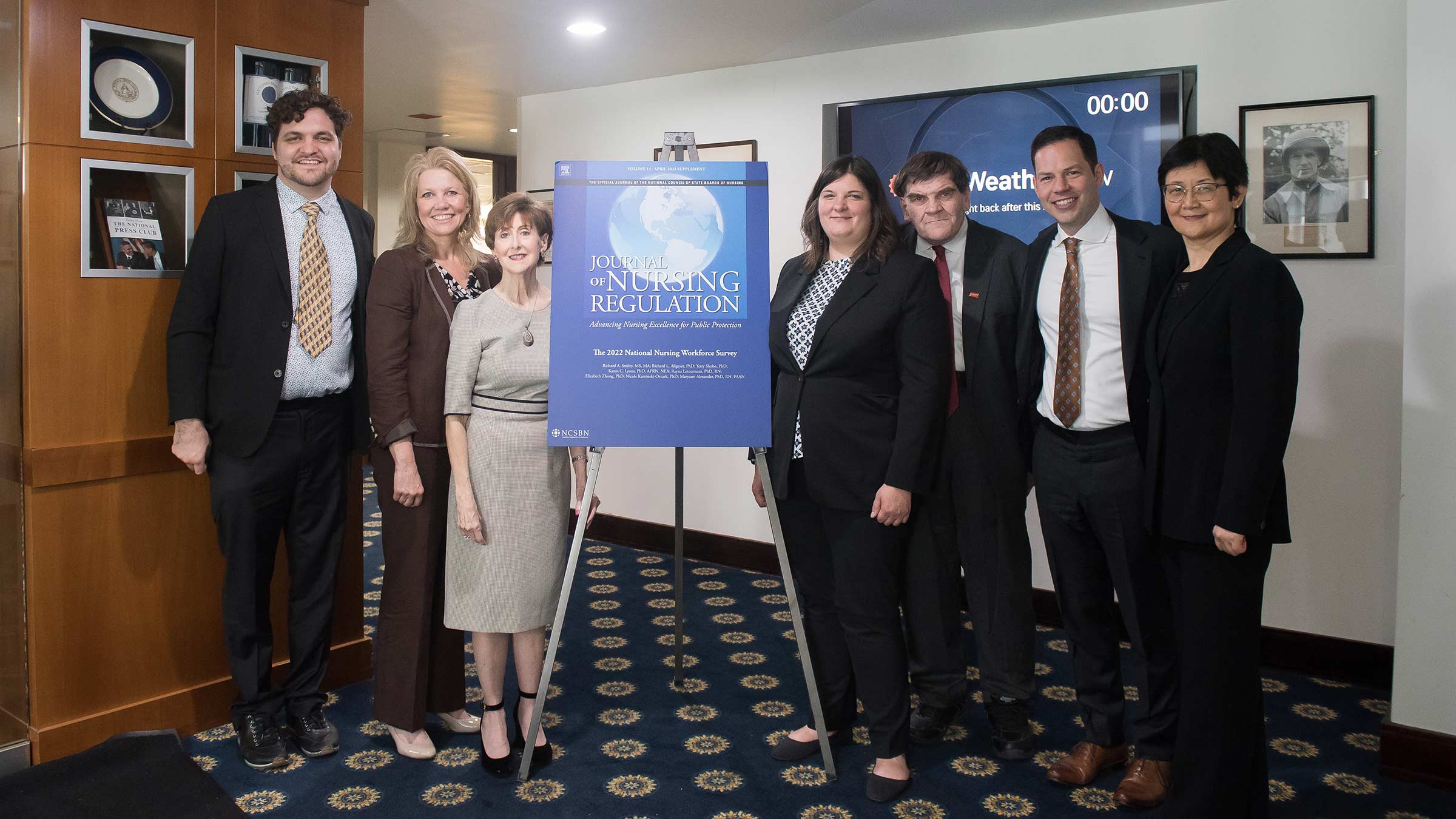
There can be no doubt about the effect the COVID-19 pandemic had on the profession of nursing. A study recently released by The National Council of State Boards of Nursing (NCSBN) points to factors including burnout and stress that have made lasting impacts on the profession.
I was in the room at the National Press Club in Washington, D.C., when the study results were released, and while the statistics and their potential ripple effect on patient care were startling, this work also solidified the resolve already felt by those of us who work in nursing education. As we work to prepare the next generation of nurses, we must continue innovating to ensure tomorrow’s nursing workforce has the readiness and resilience to be successful and lasting in their careers.
In my work in helping lead undergraduate nursing education at The Ohio State University College of Nursing, we made dramatic shifts to our education models and practices during the pandemic, including the addition of “extended-reality” simulations that allow students to practice patient-care scenarios.
I served as the lead qualitative researcher for an NCSBN study that examined the effect of the COVID-19 pandemic on nursing education programs. It tracked the engagement, academic performance and early career experience of more than 1,100 students and faculty across 27 states.
The results indicated three key points:
1 Nursing students learn through coaching and engagement.
This personal connection and mentorship was lost during the pandemic when learning shifted online and students in areas without high-speed internet faced special challenges. As the pandemic progressed, we were able to regain some of this when more of a hybrid approach was instituted to blend online content with faculty guidance.
2 A new future of nursing education needs to be imagined.
Previous ways of educating nurses must evolve for a changing future in which learning is supplemented using virtual simulations and other creative strategies that allow for robust educational models for learning how to care for patients. With the looming workforce issues ahead, we cannot afford to shy away from embracing change and exploring disruptive models.
3 Hybrid learning is here to stay.
Longstanding communication techniques and professional role development strategies have been displaced amid the world of hybrid education. As the workforce changes, graduates are entering a field with fewer experienced nurses to help guide the way. Strategies used in the hybrid model should give students the opportunity to ask questions when they arise, place emphasis on debriefing and provide creative learning strategies from web-based materials.

Our extended reality (XR) simulations are one way in which we’ve been able to explore disruptive models, embracing technology and the hybrid model while also partnering with experts from The Ohio State University College of Engineering. Funded by a grant from the American Nurses Foundation’s Reimagining Nursing Initiative, the pilot program uses XR with artificial intelligence and machine learning to create engaging experiences that can be scaled to students’ skill levels. Used either with a headset or on-screen, they supplement traditional hands-on simulation and real-life skills training.
In addition, nursing faculty embraced virtual escape rooms to teach the seven steps of evidence-based practice, a problem-solving approach to health care that uses scientific research, the expertise of the health care team and the patient’s information and preferences.
These examples are just the beginning. More research is needed to understand the most effective, evidence-based teaching practices.
We sit today in a transformed health care environment. I witnessed first-hand the turmoil that nursing students and faculty faced during the pandemic. The way we educated nurses yesterday must continue to evolve for the nurses entering the dynamic workforce future.
A great opportunity exists to enact change in nursing education to meet the needs of our graduates. Funding new research and testing new approaches to education are the paths forward to ensure we create new generations of nurses who are ready to practice in this new landscape.
References:
NCSBN 2022 National Nursing Workforce Survey (Smiley, et al, 2023).
NCSBN Assessing the Impact of the COVID-19 Pandemic on Nursing Education: A National Study of Prelicensure RN Programs (Martin, et al, 2023).

Transforming health and improving lives locally, nationally and globally
The Ohio State University College of Nursing is building dreams, discovering solutions and delivering impact.
Read how we're doing it



